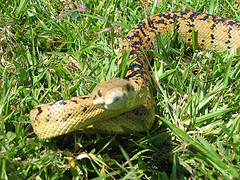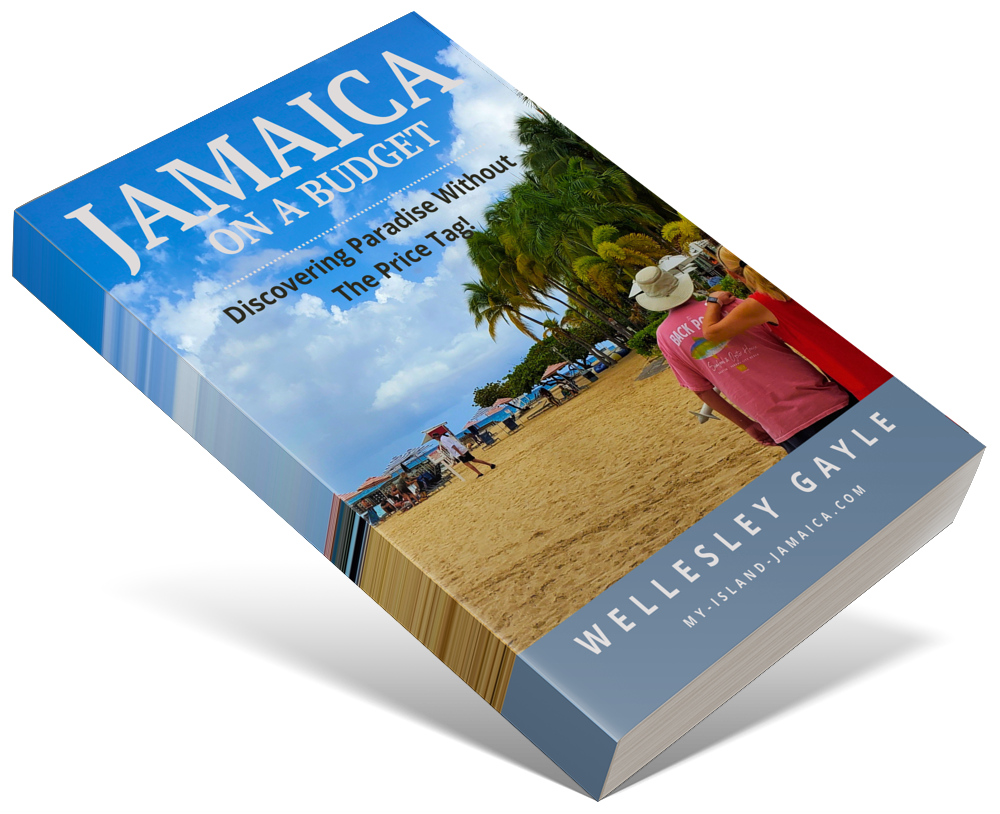Subscribe for all my updates and don't miss a thing! Sign me up!
The Beautiful
Jamaican Boa Snake
Sharing Is Caring! Share this awesome content with your friends now.
 |
 |
The Jamaican Boa or yellow snake - as we call it, lives primarily in our limestone areas. According to NEPA, it can also be found in dry scrub lands forests of the southern coasts.
New! Take a piece of Jamaica with you💃!
Savour the memories! Now you can get your authentic Jamaican souvenir items, as well as traditional Jamaican herbs, spices and housewares on our popular e-store. Click Here to learn more.
And, if you ever need a trustworthy and knowledgeable local guide, consider booking a private tour with us!
It's average length is about 2 meters or 6 feet, 6 inches. It is at a very high risk of extinction and therefore has been designated an endangered specie.
Contrary to many popular belief, this gorgeous snake is not poisonous - meaning it is not a threat to us humans.
I must point this out as many of us - including myself in the past, dreadfully feared this beautiful creature and, typical of adventurous young boys, celebrate the killing of an innocent young one - or any other snake.
We ran into quite a few back in my little rural district in Westmoreland.
Whatever we could find we used to corner it, kill it and pound it! Sometimes we would even walk around with it as some sort of victory parade.
Thankfully, I am older and wiser now!
I learned that not only is this snake not a threat to us, it may be highly beneficial to us!
In addition to the birds and other small animals, rats forms a decent part of its diet, and we all know the impact rats can have on the produce of farmers right?
So to the farmers rescue... the Jamaican Boa! :-)
On a more serious note though, the survival of this beautiful snake is threatened because of deforestation, the burning of the sugar cane fields and still, the false belief that they are dangerous to us.
There are a few initiatives however to stem these realities. According to Nepa it is protected under the following laws and conventions:
- Listed under Appendix 1 of the Convention on International Trade of Endangered species of Wild Fuana and Flora.
- Hunting in Forest reserves is also prohibited under the Forest Act (1996).
- Listed as a Protected species under the Wild Life protection Act (1945).
Laws are good, however, it will take more education and awareness to ensure that we protect this attractive and rare gift.
By the way, its scientific name, according to Wikipedia, is Epicrates Subflavus, how could I miss that?
Pages Related To Jamaican Boa
- Jamaican Iguana
- Jamaican Plants
- The Jamaican Hummingbird
- The map of Jamaica
- Profile of Jamaica
- Local Services
Make sure you subscribe to my free monthly e-zine My Island Jamaica Digest (MIJD) and stay with the latest from Jamaica!
Didn't find exactly what you were looking for?
Do a quick search of the entire site.
Return to Plants and Animals in Jamaica from The Jamaican Boa Return to Homepage from The Jamaica Boa Snake
New! Get My Latest Book👇🏿
|
You asked, I've answered! You no longer need to save for months or years, to enjoy paradise! I spilled the beans! sharing my top tips on finding cozy accommodations and secret gems, only the way a native could! Click Here to pick it up on my e-store and start saving now! |
See The Best Of Jamaica - In Videos!
|
My channel reaches over 140,000 subscribers worldwide and has leveraged over 11 million views, sharing, what I call 'The Real Jamaica'. Subscribe today and join our family of viewers. |
Read More ...
New! Experience The REAL Jamaica!
Book Your Private Tour here and experience Jamaica the way we (locals) do!
P.S. Didn't find what you were looking for?
Still need help?
Click Here to try our dependable and effective Site Search tool. It works!
Or, simply click here and here, to browse my library of over 500 questions and answers! Chances are someone already asked (and got an answer to) your question.







New! Comments
Have your say about what you just read! Leave me a comment in the box below.